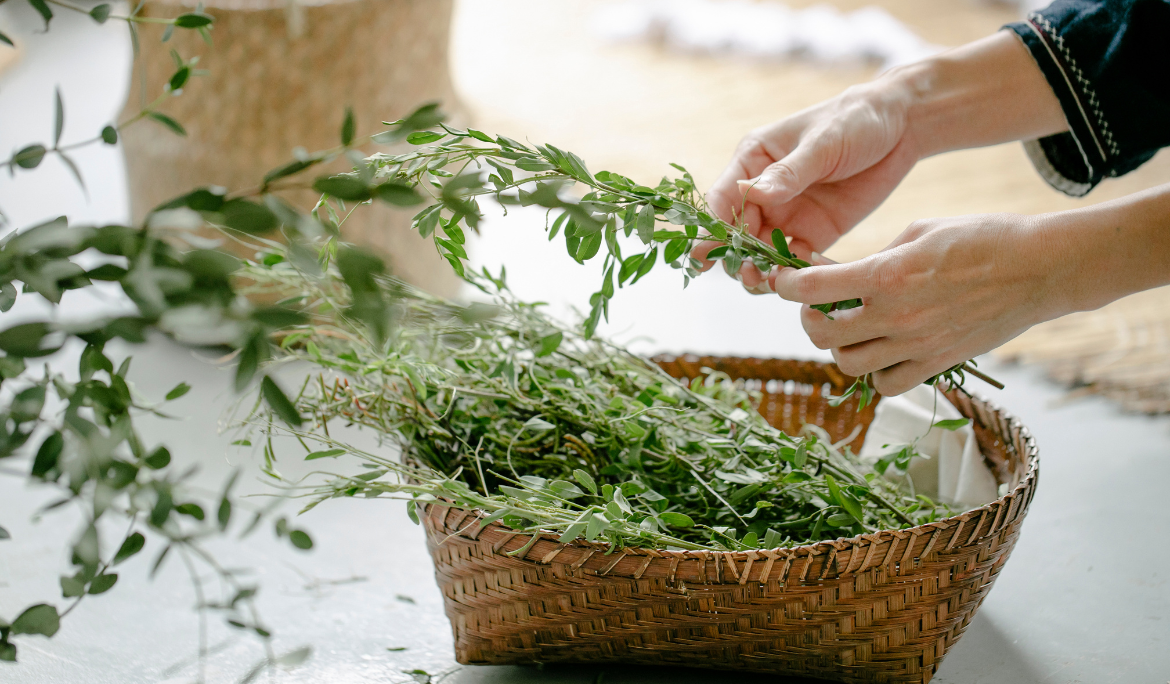Herbs have been used for centuries for their culinary, medicinal, and aromatic qualities. From adding flavor to your favorite dishes to offering health benefits, herbs are an essential part of daily life. These small, often fragrant plants are easy to grow, making them a staple in home gardens and kitchens around the world.
What Are Herbs?
Herbs are plants with leaves, seeds, or flowers that are used for flavoring, fragrance, or medicinal purposes. Unlike spices, which often come from the bark, roots, or seeds of plants, herbs are typically derived from the leafy, green parts. They can be used fresh or dried and are often grown in small pots, gardens, or window boxes due to their manageable size.
Common Culinary Herbs
Culinary herbs are perhaps the most widely recognized and used herbs. They enhance the flavor of food, turning a simple dish into something extraordinary. Here are some of the most popular culinary herbs:
Basil: A key ingredient in Mediterranean and Asian cuisines, basil is often used in pesto, salads, and pasta dishes. Its sweet, peppery flavor pairs well with tomatoes, garlic, and olive oil.
Parsley: This bright green herb is commonly used as a garnish, but it also adds a fresh, earthy flavor to soups, salads, and sauces.
Cilantro (Coriander): Known for its distinctive taste, cilantro is often used in Mexican, Indian, and Thai dishes. The seeds, known as coriander, are also used as a spice.
Rosemary: With its strong, pine-like aroma, rosemary is perfect for roasting meats, especially lamb, and adding depth to stews and soups.
Mint: Mint has a refreshing, cool taste and is widely used in teas, desserts, and savory dishes like tabbouleh or spring rolls.
Thyme: A versatile herb with a subtle earthy flavor, thyme is commonly used in French and Mediterranean cooking, especially in soups, roasts, and marinades.
Oregano: Popular in Italian and Greek dishes, oregano has a robust, slightly bitter taste that enhances pizza, pasta, and grilled meats.
Medicinal Herbs
Many herbs have medicinal properties and have been used for thousands of years to promote health and treat various ailments. Some common medicinal herbs include:
Chamomile: Known for its calming properties, chamomile is often consumed as a tea to help with sleep and relaxation. It is also used to soothe upset stomachs and skin irritations.
Lavender: Famous for its calming scent, lavender is used in aromatherapy to relieve stress and anxiety. It can also be applied to the skin to help heal burns and insect bites.
Echinacea: Frequently used to boost the immune system, echinacea is believed to reduce the severity and duration of colds and flu.
Peppermint: Used to aid digestion and alleviate headaches, peppermint is commonly consumed as a tea or applied as an essential oil to relieve muscle pain.
Ginger: Known for its anti-inflammatory and digestive properties, ginger is often used to relieve nausea, improve digestion, and reduce inflammation.
Aromatic and Ornamental Herbs
Herbs are also valued for their fragrant and ornamental qualities, making them perfect for adding a pleasant aroma to homes and gardens.
Lavender: Aside from its medicinal uses, lavender is prized for its soothing fragrance. Its purple flowers make it a beautiful addition to gardens and floral arrangements.
Lemon Balm: This lemon-scented herb is often used to repel insects and freshen up rooms. It is also used in teas to promote relaxation.
Sage: With its velvety leaves and woody aroma, sage is often planted in herb gardens for both its culinary and aromatic qualities.
Growing Herbs at Home
Herbs are some of the easiest plants to grow at home, whether in a garden or indoors. Here are some tips for growing your own herb garden:
Choose the right location: Most herbs require plenty of sunlight, so place your plants in a spot where they can get at least 6 hours of sunlight a day.
Use well-drained soil: Herbs thrive in well-drained soil, so be sure to use a pot with drainage holes or mix sand into your garden soil.
Water regularly, but don’t overwater: Herbs generally prefer soil that is kept moist but not waterlogged. Overwatering can lead to root rot.
Harvest often: Regular harvesting encourages herb plants to grow more vigorously. Snip off leaves or stems as needed, but avoid taking more than one-third of the plant at a time.
Start with easy-to-grow herbs: If you’re new to herb gardening, start with hardy, low-maintenance herbs like basil, mint, or parsley.
Conclusion
Herbs are nature’s green treasures, offering a wealth of flavors, aromas, and health benefits. Whether you use them in your cooking, as a natural remedy, or to freshen up your home, herbs are an essential part of any household. Growing and using herbs not only adds vibrancy to your meals but also connects you to centuries-old traditions of healing and wellness.



